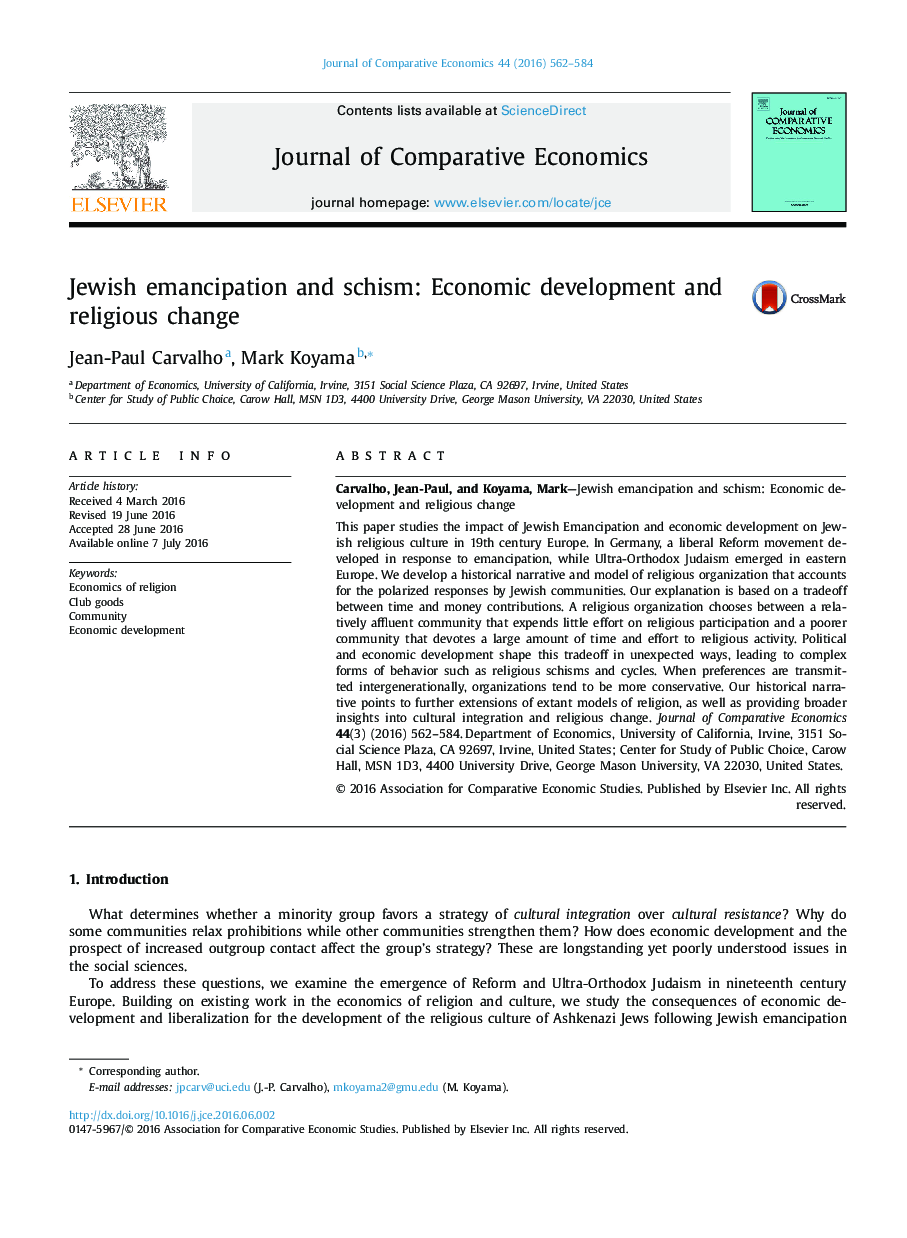| Article ID | Journal | Published Year | Pages | File Type |
|---|---|---|---|---|
| 5092187 | Journal of Comparative Economics | 2016 | 23 Pages |
â¢We study the impact of liberalization and economic growth on religious communities.â¢Liberalization and growth initially induces communities to become less strict.â¢In regions of intermediate development there is an incentive for strictness to rise.â¢We apply this model to understand the emergence of Reform and Ultra-Orthodox Judaism.â¢Our analysis sheds light on religious schisms and cycles.
This paper studies the impact of Jewish Emancipation and economic development on Jewish religious culture in 19th century Europe. In Germany, a liberal Reform movement developed in response to emancipation, while Ultra-Orthodox Judaism emerged in eastern Europe. We develop a historical narrative and model of religious organization that accounts for the polarized responses by Jewish communities. Our explanation is based on a tradeoff between time and money contributions. A religious organization chooses between a relatively affluent community that expends little effort on religious participation and a poorer community that devotes a large amount of time and effort to religious activity. Political and economic development shape this tradeoff in unexpected ways, leading to complex forms of behavior such as religious schisms and cycles. When preferences are transmitted intergenerationally, organizations tend to be more conservative. Our historical narrative points to further extensions of extant models of religion, as well as providing broader insights into cultural integration and religious change.
